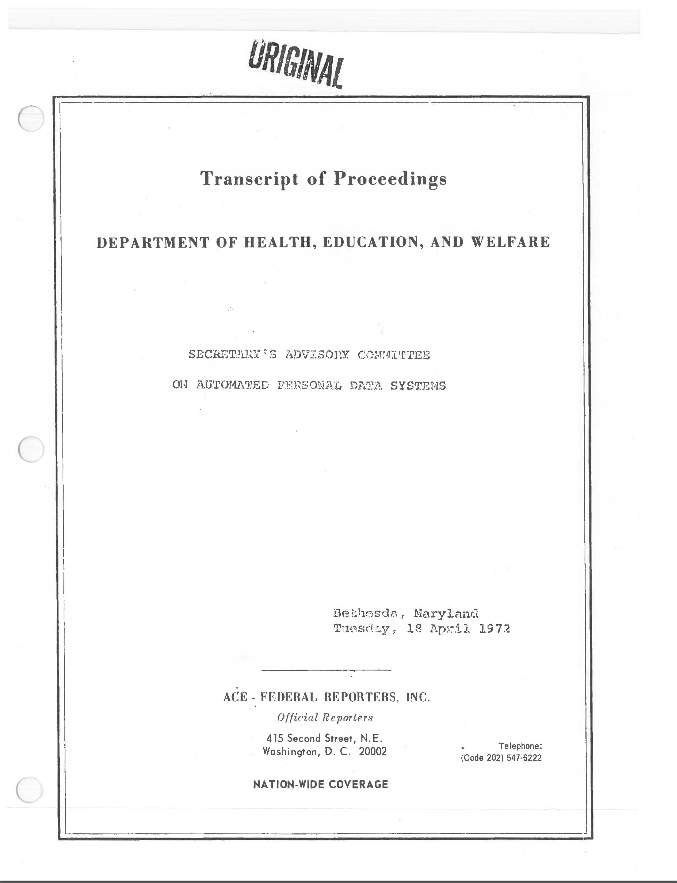New Privacy Resource: The Origins of Fair Information Practices
Chris Hoofnagle of Berkeley Law has just published arguably the single most important archive in privacy today: it is the transcripts of six of the HEW meetings in the early 1970s that formed the origins of today’s Fair Information Practices. FIPs have now for 40 years formed the cornerstone of most of the privacy laws passed globally. Long lost to the dust of time, the original hearing transcripts have never been available online, and even access to the paper versions have not been widely available.
It is impossible to overstate the importance of these newly available archives, which now in digitized form, tell the story of what was going on in the minds of the privacy experts of the 1970s as they looked forward and crafted the underpinnings of what is today the global FIPs. Hoofnagle says in his summary:
“Reading the transcripts, it is striking how little conversations about privacy have changed in forty years. Tensions among interests in efficiency, law enforcement, cost, access to knowledge and freedom of information, federalism, the vagueness of the term “privacy,” eroding practical obscurity of public records, accountability, pragmatic system design, limitations of anonymization and the problem of re-identification, fraud and risk, the incredible complexity in the provision of benefits, the needs of a large and complex administrative state, centralization versus devolved systems, and individual rights appear many times in the committee’s discussion. “
Hoofnagle has provided high-level summaries of the 6 transcripts, and has also included the 1972 memo that outlined the skeleton of FIPs for the first time. For privacy researchers, policy makers, and anyone working in the field of privacy, these transcripts are akin to finding a detailed, word-by-word transcript of the many midnight, closed-door meetings that culminated into the crafting of the US Constitution, or any other document that has achieved historic significance but that doesn’t have a robust transcript trail. Hoofnagle’s work here is of great value.
Links:

